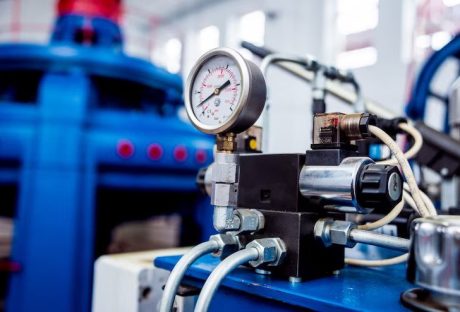Tag: working principle of pressure transducers

Pressure Transducers 101: Working Principle, Types, And Applications
Pressure transducers are vital components used in various industries and applications to measure and monitor pressure. They convert mechanical pressure into electrical signals, enabling accurate and real-time pressure readings. Here at microsensorcorp.com, we have taken the time to explore the working principle of pressure transducers for our clients, discuss the available types, and delve into their wide range of applications. Working Principle The fundamental principle behind pressure transducers lies in their ability to convert physical pressure into an electrical signal. They typically have a diaphragm or sensing element that deforms under applied pressure. This deformation is then converted into an electrical signal through various sensing technologies, such as strain gauges, capacitive, piezoresistive, or resonant frequency mechanisms. Types of Pressure Transducers Strain Gauge Pressure Transducers: These transducers utilize the principle of electrical resistance changes in a strain gauge under applied pressure. As pressure is exerted on the diaphragm, the strain gauge experiences a change in resistance, which is then converted into an electrical signal. Capacitive Pressure Transducers: Capacitive transducers measure pressure changes by monitoring the capacitance variation between the diaphragm and a fixed plate. As the diaphragm deforms, the distance between the plates changes, altering the capacitance and generating an electrical output. Piezoresistive Pressure Transducers: The principle of a piezoresistive pressure transducer is to generate a change in resistance after the sensitive core is pressurized, and then convert the change in resistance into a standard signal output through an amplification circuit. Resonant Frequency Pressure Transducers: Resonant frequency transducers measure pressure changes by monitoring the shift in the resonant frequency of a vibrating element under pressure. The pressure causes a change in the vibrational frequency, which is converted into an electrical signal. Applications of Pressure Transducers Industrial Automation: Pressure transducers are crucial in industrial automation, monitoring hydraulic and pneumatic systems and ensuring optimal operating conditions. They are used in process control and quality control applications. HVAC Systems: Pressure transducers are employed in heating, ventilation, and air conditioning (HVAC) systems. Their purpose is to monitor and control air pressure. They enable efficient and precise regulation of airflow and ventilation, enhancing energy efficiency and comfort levels. Automotive Industry: Pressure transducers are extensively used in the automotive industry to monitor fuel pressure, oil pressure, tire pressure, and various other critical parameters. They help ensure optimal performance, efficiency, and safety of vehicles. Aerospace and Aviation: Pressure transducers are vital in aerospace and aviation applications, where they monitor and control cabin pressure, fuel pressure, and hydraulic systems. They contribute to the safe and reliable operation of aircraft. Medical and Healthcare: Pressure transducers are utilized in medical equipment and healthcare applications, including respiratory systems, blood pressure monitors, and dialysis machines. They provide accurate pressure measurements for precise diagnosis and treatment. Environmental Monitoring: Pressure transducers are used in environmental monitoring systems to measure water pressure, air pressure, and weather conditions. They help in flood control, weather forecasting, and atmospheric research. Conclusion Pressure transducers are essential instruments used in various industries and applications to measure and monitor pressure accurately. They employ different sensing technologies to convert mechanical pressure into electrical signals. With their versatility and reliability, pressure transducers contribute significantly to industrial automation, HVAC systems, automotive, aerospace, healthcare, and environmental monitoring. As technology advances, pressure transducers continue to evolve, providing more precise measurements and enabling enhanced control and safety in numerous fields. Read Also: Why Sensors are Essential in Machine Automation How Portable Metrology Tools Are Making Manufacturers More Flexible
READ MOREDetails















